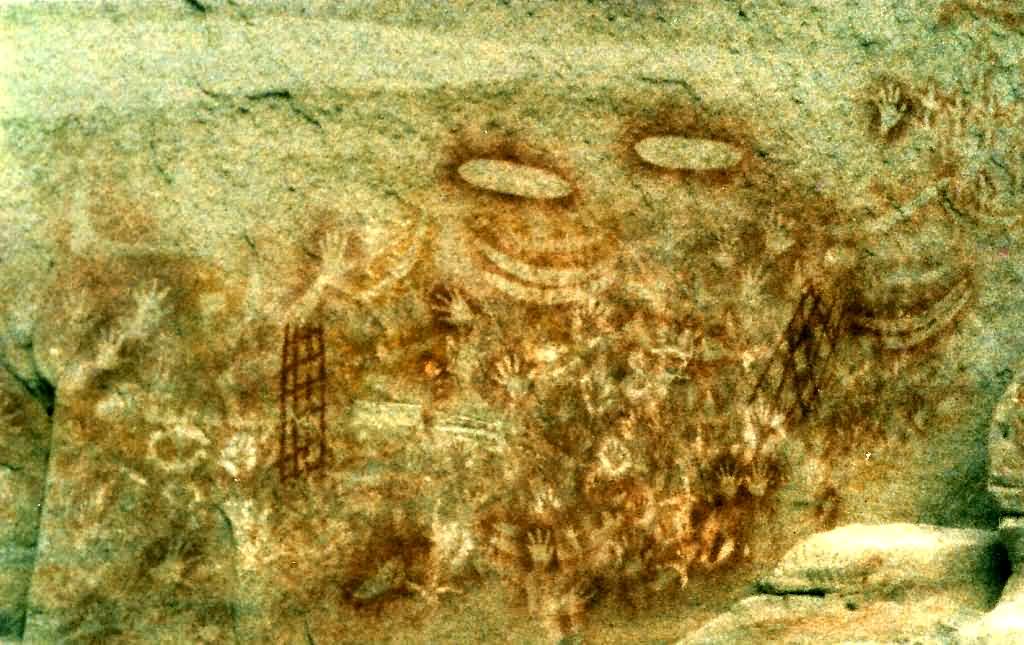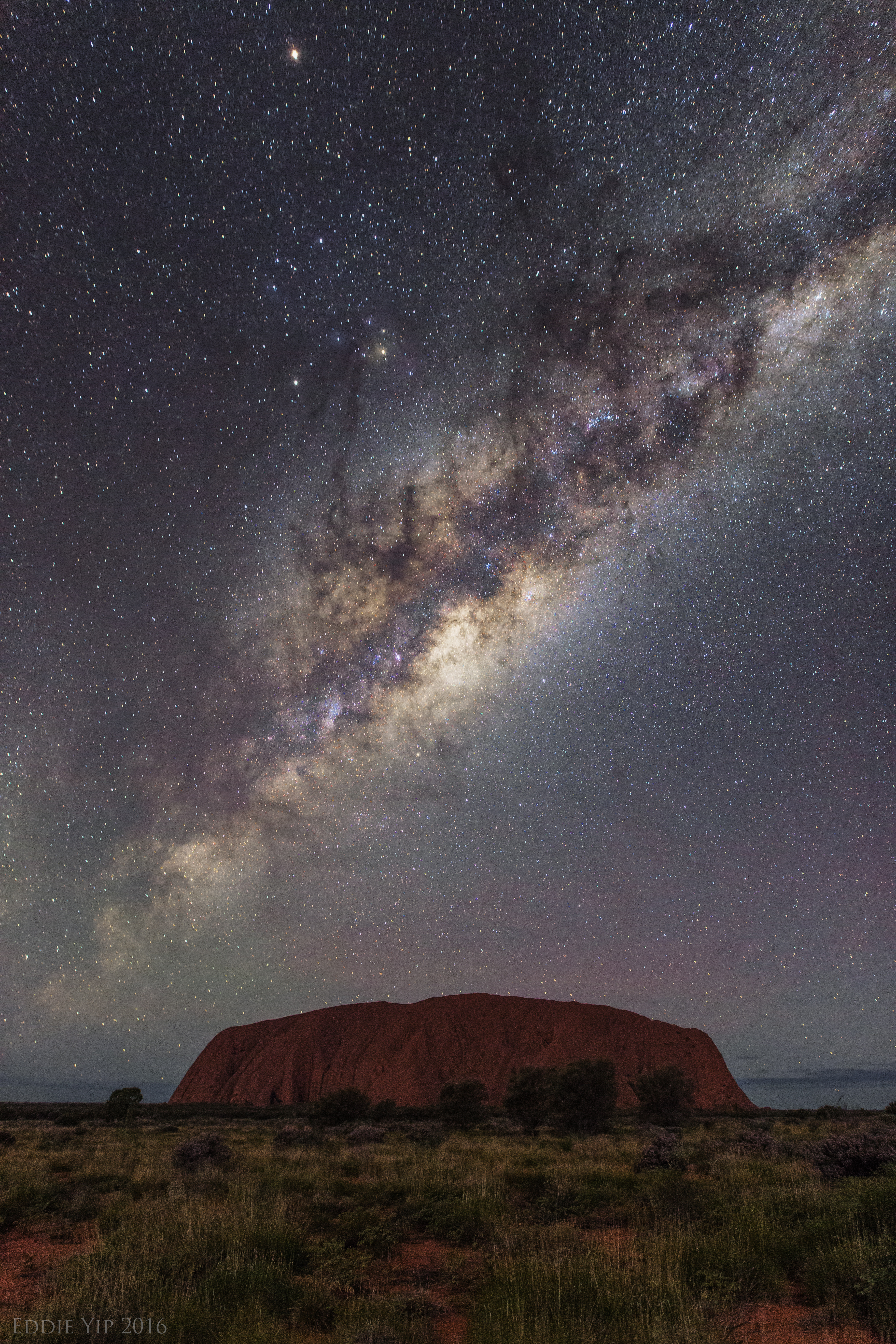|
Devil's Marbles Conservation Reserve
Karlu Karlu / Devils Marbles Conservation Reserve is a protected area in the Northern Territory of Australia located in the locality of Warumungu about south of Tennant Creek, and north of Alice Springs. The nearest settlement is the small town of Wauchope located to the south. The hamlet of Wycliffe Well is located to the south. The Devils Marbles are of great cultural and spiritual significance to the Aboriginal traditional owners of the land, and the reserve protects one of the oldest religious sites in the world as well as the natural rock formations found there. ''Karlu Karlu'' is the local Aboriginal term for both the rock features and the surrounding area. The Aboriginal term translates as "round boulders" and refers to the large boulders found mainly in the western side of the reserve. The English name for the boulders derives from a quote by John Ross during the 1870 Australian Overland Telegraph Line expedition, where he said "This is the Devil’s country; he’ ... [...More Info...] [...Related Items...] OR: [Wikipedia] [Google] [Baidu] |
Warumungu, Northern Territory
__NOTOC__ Warumunga is a locality in the Northern Territory of Australia located about south-east of the territory capital of Darwin. The locality’s name derived from the "Warumungu Land Trust" , which make up a large part of the locality. Its boundaries and name were gazetted on 4 April 2007. , it has an area of . The 2016 Australian census reports that Warumunga had 157 people living within its boundaries, of which 112 (69.6%) identified as Aboriginal and/or Torres Strait Islander people. The population fell to 146 in the 2021 census. Warumunga is located within the federal Division of Lingiari, the territory electoral division of Barkly and the local government area of the Barkly Region The Barkly Region, formerly Barkly Shire, is a Local Government Areas of the Northern Territory, local government area of the Northern Territory of Australia, administered by the Barkly Regional Council. The region's main town is Tennant Creek .... See also * Nobles Nob mine Re ... [...More Info...] [...Related Items...] OR: [Wikipedia] [Google] [Baidu] |
Weathering
Weathering is the deterioration of rocks, soils and minerals (as well as wood and artificial materials) through contact with water, atmospheric gases, sunlight, and biological organisms. It occurs '' in situ'' (on-site, with little or no movement), and so is distinct from erosion, which involves the transport of rocks and minerals by agents such as water, ice, snow, wind, waves and gravity. Weathering processes are either physical or chemical. The former involves the breakdown of rocks and soils through such mechanical effects as heat, water, ice and wind. The latter covers reactions to water, atmospheric gases and biologically produced chemicals with rocks and soils. Water is the principal agent behind both kinds, though atmospheric oxygen and carbon dioxide and the activities of biological organisms are also important. Biological chemical weathering is also called biological weathering. The materials left after the rock breaks down combine with organic material to create so ... [...More Info...] [...Related Items...] OR: [Wikipedia] [Google] [Baidu] |
Dreamtime
The Dreaming, also referred to as Dreamtime, is a term devised by early anthropologists to refer to a religio-cultural worldview attributed to Australian Aboriginal religion and mythology, Australian Aboriginal mythology. It was originally used by Francis James Gillen, Francis Gillen, quickly adopted by his colleague Walter Baldwin Spencer, and thereafter popularised by A. P. Elkin, who later revised his views. The Dreaming is used to represent Aboriginal concepts of "Everywhen", during which the land was inhabited by ancestral figures, often of heroic proportions or with supernatural abilities. The term is based on a rendition of the Arandic languages, Arandic word , used by the Aranda people, Aranda (Arunta, Arrernte) people of Central Australia, although it has been argued that it is based on a misunderstanding or mistranslation. Some scholars suggest that the word's meaning is closer to "Eternity, eternal, uncreated". Anthropologist William Edward Hanley Stanner, William ... [...More Info...] [...Related Items...] OR: [Wikipedia] [Google] [Baidu] |
Traditional Owners
Native title is the set of rights, recognised by Australian law, held by Aboriginal and Torres Strait Islander groups or individuals to land that derive from their maintenance of their traditional laws and customs. These Aboriginal title rights were first recognised as a part of Australian common law with the decision of '' Mabo v Queensland (No 2)'' in 1992. The doctrine was subsequently implemented and modified via statute with the '' Native Title Act 1993''. The concept recognises that in certain cases there was and is a continued beneficial legal interest in land held by Indigenous peoples which survived the acquisition of radical title and sovereignty to the land by the Crown. Native title can co-exist with non-Aboriginal proprietary rights and in some cases different Aboriginal groups can exercise their native title rights over the same land. The Federal Court of Australia arranges mediation in relation to claims made by Aboriginal and Torres Strait Islander peoples, ... [...More Info...] [...Related Items...] OR: [Wikipedia] [Google] [Baidu] |
Dreaming (spirituality)
The Dreaming, also referred to as Dreamtime, is a term devised by early anthropologists to refer to a religio-cultural worldview attributed to Australian Aboriginal mythology. It was originally used by Francis Gillen, quickly adopted by his colleague Walter Baldwin Spencer, and thereafter popularised by A. P. Elkin, who later revised his views. The Dreaming is used to represent Aboriginal concepts of "Everywhen", during which the land was inhabited by ancestral figures, often of heroic proportions or with supernatural abilities. The term is based on a rendition of the Arandic word , used by the Aranda (Arunta, Arrernte) people of Central Australia, although it has been argued that it is based on a misunderstanding or mistranslation. Some scholars suggest that the word's meaning is closer to " eternal, uncreated". Anthropologist William Stanner said that the concept was best understood by non-Aboriginal people as "a complex of meanings". ''Jukurrpa'' is a widespread term ... [...More Info...] [...Related Items...] OR: [Wikipedia] [Google] [Baidu] |
Warlpiri People
The Warlpiri, sometimes referred to as Yapa, are a group of Aboriginal Australians defined by their Warlpiri language, although not all still speak it. There are 5,000–6,000 Warlpiri, living mostly in a few towns and settlements scattered through their traditional land in the Northern Territory, north and west of Alice Springs (Mparntwe). About 3,000 people still speak the Warlpiri language. The word "Warlpiri" has also been romanised as Walpiri, Walbiri, Elpira, Ilpara, and Wailbri. Language The Warlpiri language is a member of the Ngumpin-Yapa subgroup of the Pama-Nyungan family of languages. The name ''Yapa'' comes from the word for "person", and is also used by the Warlpiri people to refer to themselves, as Indigenous people rather than "kardiya" (non-Indigenous). The closest relative to Warlpiri is Warlmanpa. It has four main dialects; Yuendumu Warlpiri, in the south-west, Willowra Warlpiri, in the central area, around the Lander River, the northern dialect, Lajam ... [...More Info...] [...Related Items...] OR: [Wikipedia] [Google] [Baidu] |
Warumungu People
The Warumungu (or Warramunga) are a group of Aboriginal Australians of the Northern Territory. Today, Warumungu are mainly concentrated in the region of Tennant Creek and Alice Springs. Warumungu language calls Alice Springs ''Warm Springs'', and this is its original name. Language Their language is Warumungu. It is similar to the Warlpiri spoken by the Warlpiri people. It is a suffixing language, in which verbs are formed by adding a tense suffix (although some verbs are formed by compounding a preverb). As are many of the surviving Indigenous Australian languages, the Warumungu language is undergoing rapid change. The morphology used by younger speakers differs significantly than the one used by older speakers. An example of a Warumungu sentence might be "''apurtu im deya o warraku taun kana''", meaning "Father's mother, is she there, in town, or not?". Warumungu is classified as a living language, but the number of speakers seemed to be decreasing quickly and by the mi ... [...More Info...] [...Related Items...] OR: [Wikipedia] [Google] [Baidu] |




